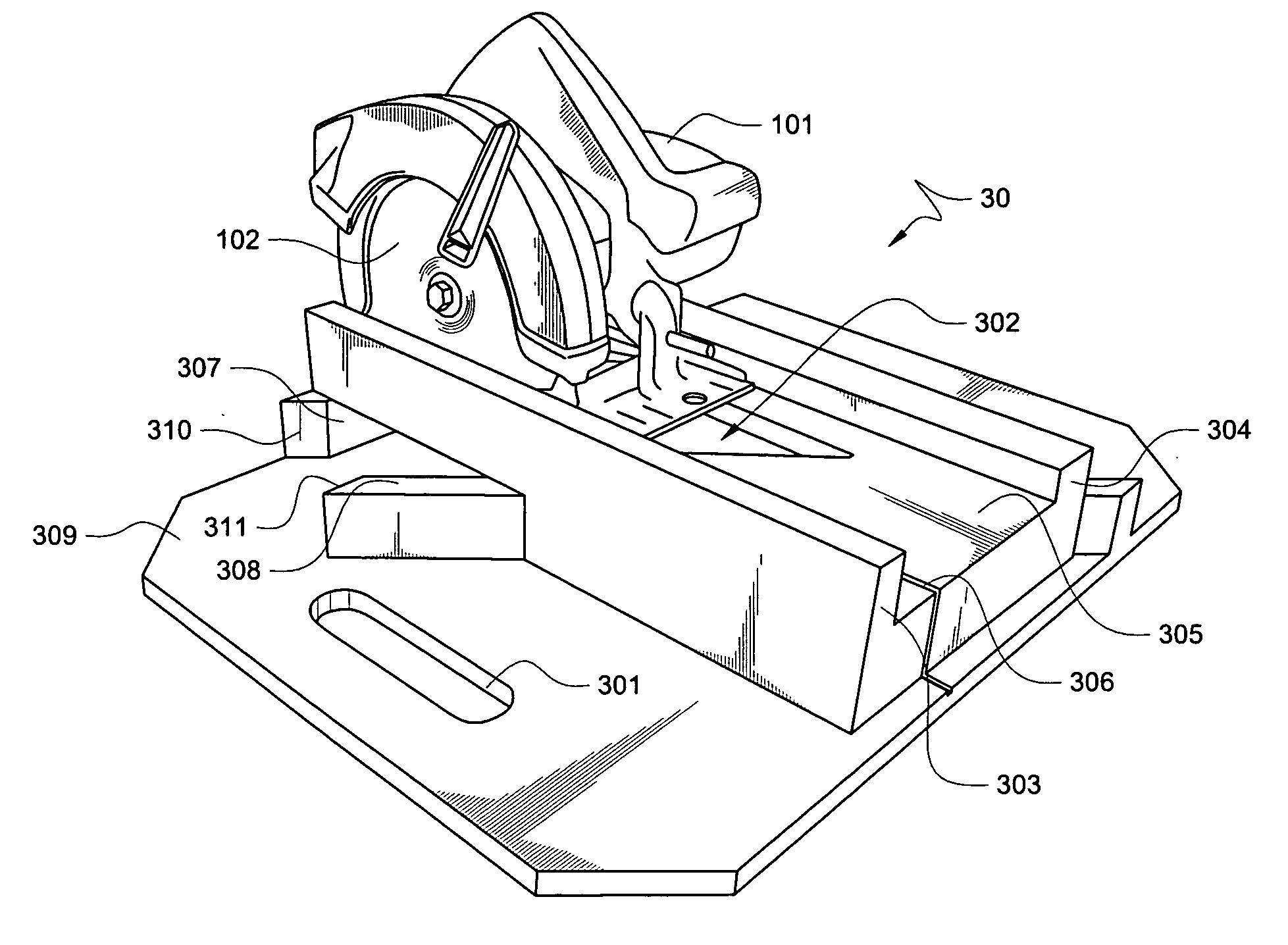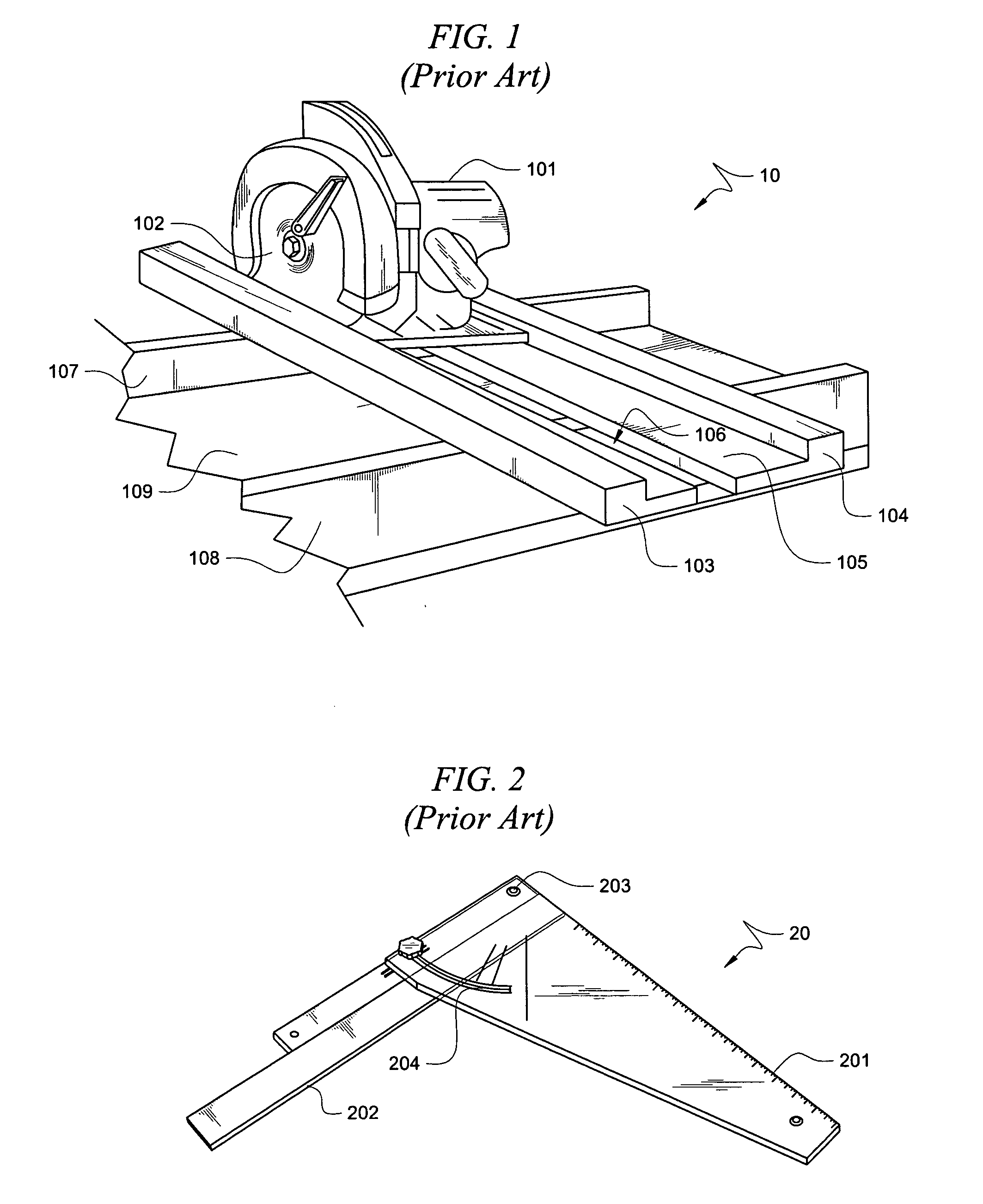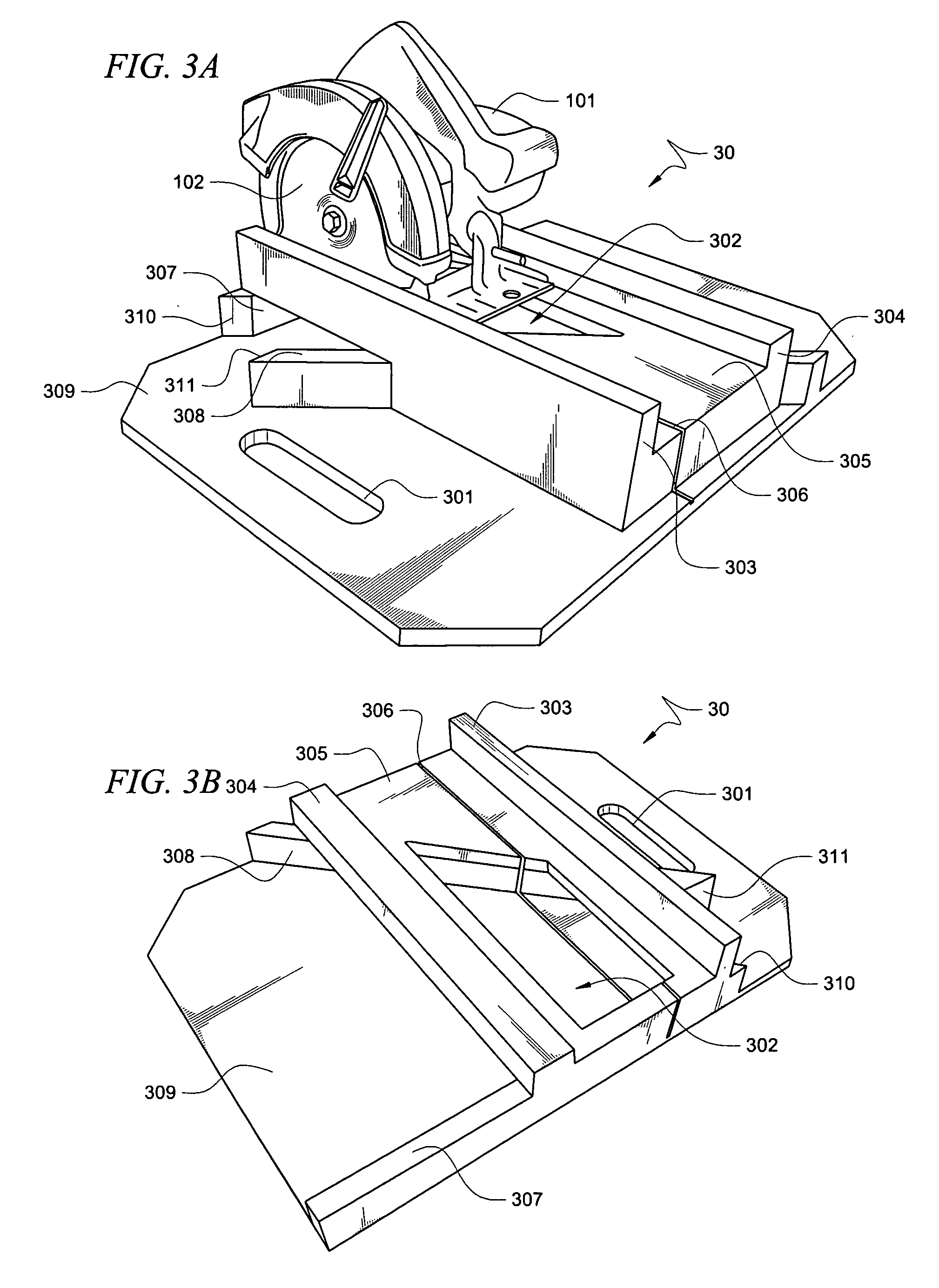Power saw miter guide
a technology of power saws and guides, which is applied in the field of power saw miter guides, can solve the problems of single notch not being able to properly constrain the blade, the typical miter box cannot and the cutting of a new notch is unlikely to work with a common hand-held power saw. achieve the effect of precise cutting
- Summary
- Abstract
- Description
- Claims
- Application Information
AI Technical Summary
Benefits of technology
Problems solved by technology
Method used
Image
Examples
Embodiment Construction
[0019]FIG. 1 shows prior art cutting guide 10 for making 90-degree cross cuts with power saw 101. Prior art cutting guide comprises guide rail 103 and 104, saw support surface 105, parallel fences 107 and 108, and cutting surface 109. Saw support surface 105 comprises notch 106 through which saw blade 102 passes when cutting an object. Because notch 106 completely separates saw support surface 105 into two pieces, each of guide rails 103 and 104 must be firmly attached to both fences 107 and 108 for structural rigidity. As a result, in the prior art device 10, fences 107 and 108 are not adjustable.
[0020]In operation, a user places an object to be cut on cutting surface 109, between fences 107 and 105, completely to the side of one of guide rails 104 and 103. The object is then slid along cutting surface 109 until the part of the object to be cut is beneath notch 106. Since the object must be able to slide along cutting surface 109, and fences 107 and 108 are not adjustable, fences 1...
PUM
| Property | Measurement | Unit |
|---|---|---|
| angle | aaaaa | aaaaa |
| angle | aaaaa | aaaaa |
| angle | aaaaa | aaaaa |
Abstract
Description
Claims
Application Information
 Login to View More
Login to View More - R&D
- Intellectual Property
- Life Sciences
- Materials
- Tech Scout
- Unparalleled Data Quality
- Higher Quality Content
- 60% Fewer Hallucinations
Browse by: Latest US Patents, China's latest patents, Technical Efficacy Thesaurus, Application Domain, Technology Topic, Popular Technical Reports.
© 2025 PatSnap. All rights reserved.Legal|Privacy policy|Modern Slavery Act Transparency Statement|Sitemap|About US| Contact US: help@patsnap.com



